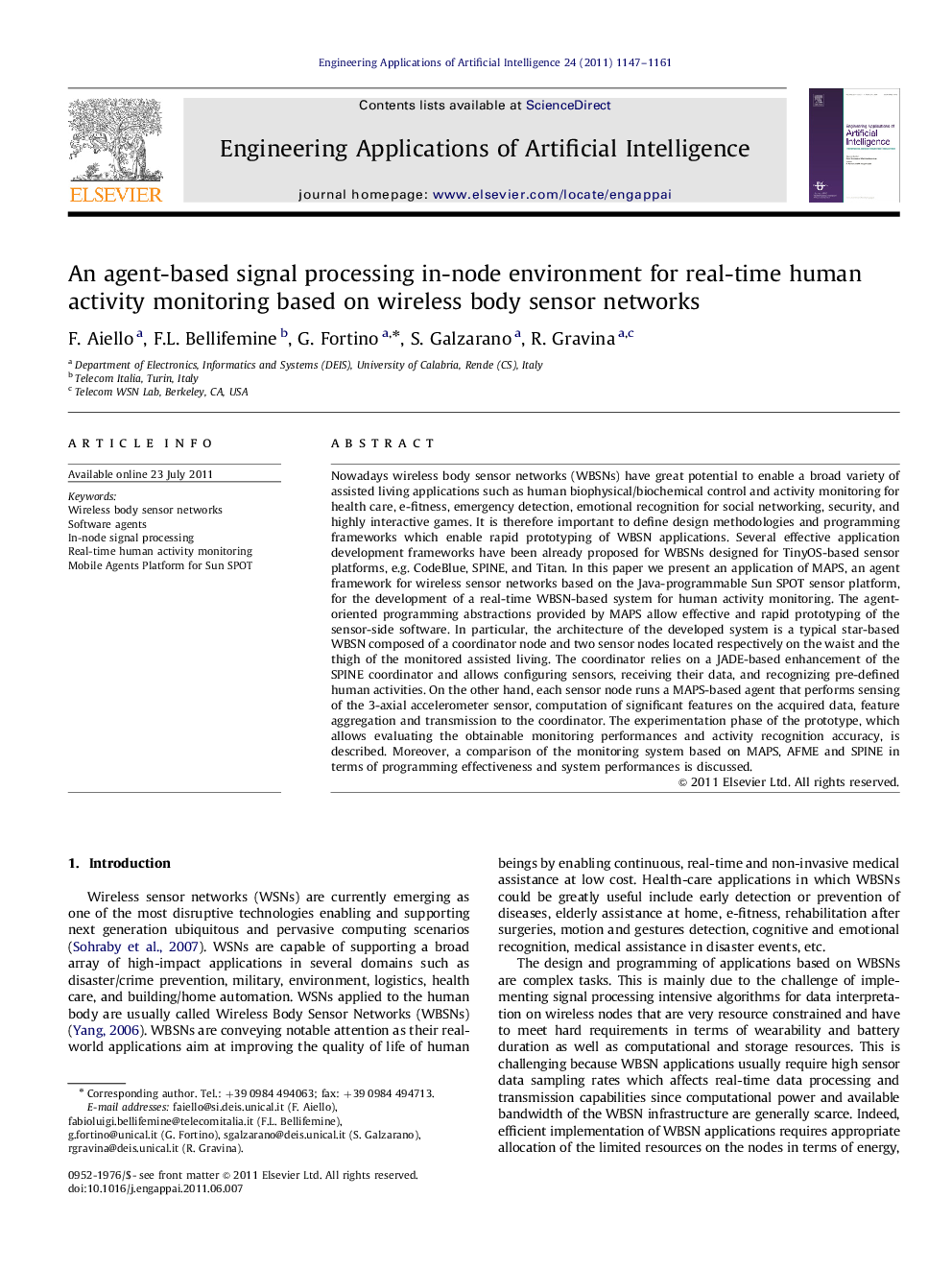| Article ID | Journal | Published Year | Pages | File Type |
|---|---|---|---|---|
| 381230 | Engineering Applications of Artificial Intelligence | 2011 | 15 Pages |
Nowadays wireless body sensor networks (WBSNs) have great potential to enable a broad variety of assisted living applications such as human biophysical/biochemical control and activity monitoring for health care, e-fitness, emergency detection, emotional recognition for social networking, security, and highly interactive games. It is therefore important to define design methodologies and programming frameworks which enable rapid prototyping of WBSN applications. Several effective application development frameworks have been already proposed for WBSNs designed for TinyOS-based sensor platforms, e.g. CodeBlue, SPINE, and Titan. In this paper we present an application of MAPS, an agent framework for wireless sensor networks based on the Java-programmable Sun SPOT sensor platform, for the development of a real-time WBSN-based system for human activity monitoring. The agent-oriented programming abstractions provided by MAPS allow effective and rapid prototyping of the sensor-side software. In particular, the architecture of the developed system is a typical star-based WBSN composed of a coordinator node and two sensor nodes located respectively on the waist and the thigh of the monitored assisted living. The coordinator relies on a JADE-based enhancement of the SPINE coordinator and allows configuring sensors, receiving their data, and recognizing pre-defined human activities. On the other hand, each sensor node runs a MAPS-based agent that performs sensing of the 3-axial accelerometer sensor, computation of significant features on the acquired data, feature aggregation and transmission to the coordinator. The experimentation phase of the prototype, which allows evaluating the obtainable monitoring performances and activity recognition accuracy, is described. Moreover, a comparison of the monitoring system based on MAPS, AFME and SPINE in terms of programming effectiveness and system performances is discussed.
► Exploitation of the agent-oriented programming paradigm to develop WSN applications. ► Design and implementation of an agent-based real-time human activities monitoring application. ► Application efficiency evaluation by using the MAPS, AFME and SPINE frameworks. ► Demonstration of MAPS effectiveness and efficiency in developing WBSN applications.
